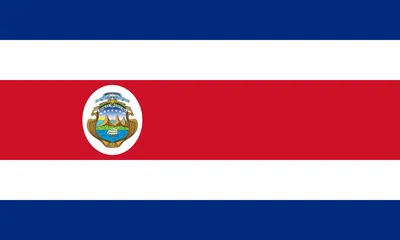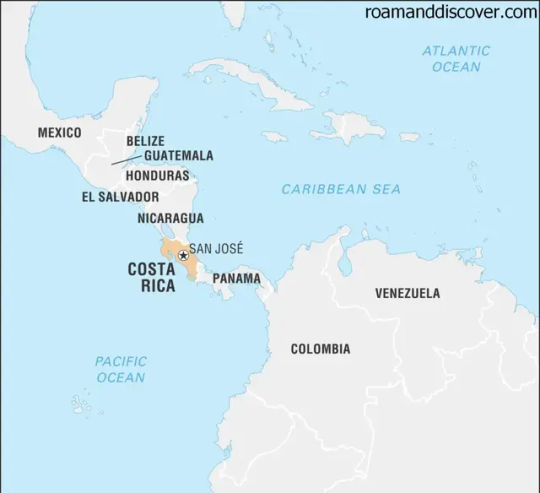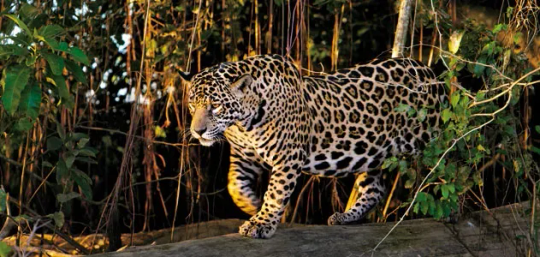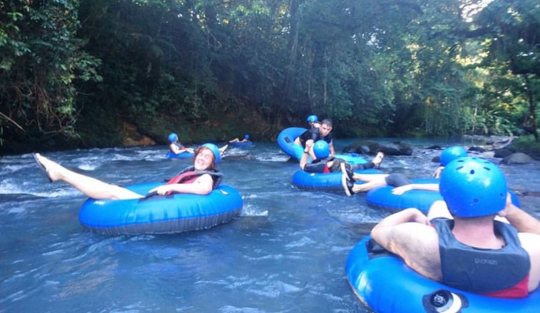#VisitCostaRica
Explore tagged Tumblr posts
Text
0 notes
Text

Advance Variations of Eka Pada Rajakapotasana (Pigeon Pose)
Eka Pada Rajakapotasana III (One-Legged King Pigeon Pose):
This advanced variation involves extending one arm overhead while holding the foot of the bent leg with the opposite hand. The extended arm adds an extra element of balance and backbend, requiring a combination of strength, flexibility, and focus. Eka Pada Rajakapotasana III provides a profound stretch along the front of the body, from the hip flexors to the chest and shoulders.
#costarica#puravida#colombia#panama#mexico#a#nature#chile#venezuela#argentina#travel#ecuador#peru#costaricacool#love#guatemala#costaricapuravida#espa#puertorico#visitcostarica#photography#n#thisiscostarica#honduras#guanacaste#nicaragua#usa#costaricagram#brasil#elsalvador
1 note
·
View note
Text
nosara, costa rica

Discover the breathtaking beauty of Nosara, Costa Rica a true slice of paradise.
0 notes
Text
Costa Rica

Welcome to Costa Rica, a small but incredibly diverse country located in Central America. In this article, we will explore the rich culture and history of Costa Rica, as well as its stunning natural surroundings and endless activities for visitors. Our article is divided into several sections, each focusing on a different aspect of this incredible country. - In the Etymology section, we will learn about the origins and meaning of the name Costa Rica. - Next, in the History section, we will take a brief look at the country's history from pre-Columbian times to the present day. - In the Geology section, we will learn about the country's geology and how it contributes to its landscape. - Then, in the Geography section, we will discuss the physical and political geography of Costa Rica, including its regions and major cities. - In the Ecology section, we will explore the incredible natural resources of Costa Rica and the importance of their conservation. - The Biodiversity section will focus on why Costa Rica is considered one of the world's most biodiverse countries. - We will then look at the country's climate zones and microclimates in the Climate section. - In the Environmental Issues section, we will summarize the efforts of Costa Rica towards sustainability and highlight some of its environmental challenges. - Next, in the Politics section, we will briefly discuss the country's democratic process and political history. - We will then analyze the country's economy, primary industries, and exports in the Economy section. - The Infrastructure section will look at the transportation systems and general infrastructure of Costa Rica. - We will explore some of Costa Rica's main contributions to scientific research and technological innovation in the Science and Technology section. - The Famous People section will list some notable past and present Costa Ricans. - The Demographics section will give an overview of the country's population, including ethnicities, religions, languages, and major cities. - In the Health section, we will focus on Costa Rica's healthcare system, including its accessibility and quality. - We will then delve into Costa Rican culture, including music, art, and cuisine, in the Culture section. - Next, in the Activities section, we will discuss the various exciting activities visitors can participate in while in Costa Rica. - The Cities section will provide a detailed look at some of the most important and interesting cities in Costa Rica. - In The Most Beautiful Cities section, we will highlight some of the most aesthetically pleasing cities in Costa Rica. - In the Places to Visit section, we will give readers a list of must-see locations in Costa Rica for tourists. - The Food and Drink section will focus on Costa Rican cuisine and its most popular beverages. - In the Flights section, we will provide information about Costa Rica's airports and airlines as well as flights to and within the country. - The Accommodation section will list different types of housing options available to visitors to Costa Rica. - in the Costa Rica Through the Eyes of the World section, we will summarize how Costa Rica is viewed by the rest of the world, including stereotypes and perceptions. Buckle up and join us on this journey to explore the magic that is Costa Rica.

Etymology
Etymology refers to the study of the origin and meaning of words. The name "Costa Rica" originates from the Spanish words "costa" meaning "coast" and "rica" meaning "rich" or "wealthy". This name was given to the country by the Spanish conquerors who arrived in the country in the 16th century. They were impressed by the natural beauty of the country and were hopeful that it would yield bountiful riches. However, the country was not as wealthy as the Spaniards had hoped. The indigenous peoples of the country, who lived in small tribes, did not possess the gold and silver that the conquerors were looking for. The country's natural resources, such as coffee, bananas, and other agricultural products, were not discovered until centuries later. Despite the initial misunderstanding of the country's wealth, the name "Costa Rica" has endured and become a source of pride for its citizens. It has come to represent the natural beauty and biodiversity of the country, as well as the peaceful way of life that its people espouse. The name has also inspired the country's motto "Pura Vida" meaning "pure life", which is often used to describe the relaxed and joyful lifestyle of its inhabitants. the etymology of the name "Costa Rica" reflects the natural beauty and potential for wealth that the country holds. While it may not have the riches that its name originally implied, it has become a symbol of the country's natural riches and peaceful way of life.
History
Costa Rica has a long and fascinating history, dating back to pre-Columbian times when various indigenous tribes lived throughout the region. These tribes included the Chibcha, Diquis, and Huetares. In the 16th century, Spanish explorers arrived in the region and began to colonize it. They introduced Christianity and brought African slaves to work on plantations. Costa Rica gained its independence from Spain in 1821, along with several other Central American countries. In the years that followed, Costa Rica experienced various political upheavals, including civil wars and a brief period of annexation by the Central American Federation. However, by the late 1800s, the country had begun to stabilize politically and economically. During this time, Costa Rica expanded its coffee industry, which became a major source of income for the country. In the early 1900s, the country became involved in a conflict called the Coto War, which was fought between Costa Rica and Nicaragua over a disputed border region. More recently, in the 1980s, Costa Rica faced a series of political and social challenges, including a debilitating economic crisis and a period of violent civil unrest. However, the country has since rebounded and is now one of the most stable and prosperous nations in Central America, with a thriving tourism industry and a burgeoning technology sector.
Geology
Costa Rica's geology is diverse and unique, shaped by volcanic activity and tectonic movements. The country is part of the Pacific Ring of Fire and the Central American Volcanic Arc, resulting in over 200 identifiable volcanic formations and numerous active and dormant volcanoes. One of the most notable features of Costa Rica's geology is its mountainous terrain, which covers around 75% of the land area. The highest peak in the country is Cerro Chirripó, standing at 3,819 meters (12,530 feet) tall. The Central Mountain Range, or Cordillera Central, runs through the center of the country and is home to many of Costa Rica's volcanoes and national parks. The mountain range serves as a vital watershed, providing water to much of the country. The country's geology also has a significant impact on its water resources. Costa Rica has numerous rivers, springs, and waterfalls, with much of the country's electricity generated by hydropower. The country's geology and topography have also contributed to the creation of hot springs and geothermal sites. In addition to its volcanic formations and mountains, Costa Rica also has numerous geological formations, including caves, sinkholes, and canyons. Barra Honda National Park, located in the Guanacaste region, features a system of underground limestone caves, some of which are over 200 meters deep. Costa Rica's geology and its rich volcanic soil have also contributed to the country's biodiversity and lush landscape. The soil is highly fertile, supporting a wide array of vegetation, including tropical rainforests, cloud forests, and dry forests. The country's numerous national parks and protected areas highlight the natural beauty and ecological significance of Costa Rica's geology and landscape.
Geography
Costa Rica has a unique geographic position in Central America, bordered by Nicaragua to the north, Panama to the south, the Pacific Ocean to the west, and the Caribbean Sea to the east. It covers a total area of 51,100 square kilometers. The country is divided into seven provinces, each with its own capital and various cantons. The capital city of Costa Rica is San Jose, located in the province of San Jose. Other major cities in Costa Rica include Alajuela, Cartago, Heredia, Liberia, and Puntarenas. The country's terrain is diverse, ranging from mountains, hills, valleys, and coastal plains. Costa Rica is home to some of the most active and well-known volcanoes in the world, such as Arenal, Poas, and Irazu. The highest peak in Costa Rica is Cerro Chirripo, which stands at 3,820 meters. The country has a tropical climate, with two distinct seasons: the rainy season and the dry season. The rainy season, also known as the green season, lasts from May to November, whereas the dry season, also known as the high season, runs from December to April. The physical geography of the country plays a major role in shaping the political divisions of Costa Rica. The country is divided into seven provinces, each with its own unique natural features and environment. These provinces are divided further into cantons, which vary in size and population, but are all governed by a mayor and a municipal council. The country's political geography is further shaped by the country's history and culture. Costa Rica has a long tradition of democracy and political stability, which has helped to shape its current political system. The country is divided into districts that are governed by a representative from the executive branch. Costa Rica's physical and political geography play a significant role in shaping its economy, culture, and politics.
Ecology
Costa Rica is renowned globally for its exceptional natural wealth and unrivaled biodiversity. The country boasts 12 distinct ecological zones, from cloud forests and rainforests to savannas and mangrove swamps. This small country crams in over 500,000 individual species, comprising 4 percent of the entire planet's biodiversity. Some of the Keystone species found in Costa Rica are the jaguar, tapir, and several monkey species. Despite its small size, Costa Rica is home to 200 volcanoes, including six active ones. it is home to several protected areas containing an immensely varied range of flora and fauna. The country has incredible natural resources in the form of lush forested jungles, pristine beaches, and crystal clear waters, home to aquatic lives of all shapes and sizes. Therefore, it has become a favorite destination for nature enthusiasts and eco-friendly tourists around the world. The government of Costa Rica has recognized the importance of preserving these natural resources, and so has established a vast network of protected areas, nature reserves, national parks, and biological corridors. 25% of the country's total land area is set aside as protected areas, which, in turn, has helped bring in over 2.5 million tourists annually. Though it is vital for the country's economy, protecting their natural heritage remains their top priority. Some of the most popular national parks include the Arenal Volcano National Park, Monteverde Cloud Forest Reserve, and Manuel Antonio National Park. Within these protected areas, nature lovers can witness Costa Rica's famed rich biodiversity and ecology up close. Frequently, guided tours and forest hikes are available, and guides explain the vital roles various species play in their environment. The country's incredible natural resources and its drive towards eco-friendliness make it one of the world's leading environmental guardians. Costa Rica's commitment to sustainability has made it one of only a few countries globally to hold the Pura Vida economy certification. This certification recognizes Costa Rica's long-term commitment to environmental health and sustainability. It is impressive to see the tireless efforts and fight put up by the Costa Rican government, conservationists, and wildlife researchers to protect their natural resources. The conservation and preservation of ecology remain a top concern and an ever-changing challenge. Costa Rica shows the world that being an environmental warrior is possible while still developing a thriving economy.
Biodiversity
Costa Rica is a small country with an incredibly rich variety of flora and fauna, making it one of the world's most biodiverse countries. Despite its small size, Costa Rica is home to almost 4% of the world's known species, and over a quarter of its land is protected by national parks and reserves. There are a number of factors that contribute to Costa Rica's exceptional biodiversity. One is its location - the country is positioned between North and South America, and serves as a natural bridge between the two continents. This has allowed for a great exchange of species between the two regions. Another factor is the country's varied topography. Costa Rica is characterized by a rugged and mountainous terrain, which has created numerous microclimates and ecological niches. These diverse habitats have allowed for the evolution of a wide range of unique species, many of which are found nowhere else in the world. In addition, Costa Rica's tropical climate and ample rainfall provide ideal conditions for plant growth. The country is home to over 12,000 species of plants, including hundreds of orchid species and numerous types of fruit trees. Perhaps the most significant contributor to Costa Rica's biodiversity, however, is the country's commitment to conservation. Since the 1970s, Costa Rica has made significant efforts to protect its natural resources, including setting aside large areas of land for national parks and reserves. Today, over 25% of the country's land is under some form of protection, making it one of the most eco-friendly countries in the world. Costa Rica's conservation efforts have had a major impact on the country's flora and fauna. Some of its most iconic species, such as the jaguar, the sea turtle, and the scarlet macaw, have been brought back from the brink of extinction thanks to these efforts. The country's commitment to sustainability has also made it a model for ecotourism, with thousands of visitors flocking to Costa Rica each year to experience its incredible natural beauty firsthand. All of these factors combine to make Costa Rica one of the world's most biodiverse countries. Its rich natural resources make it a unique and fascinating destination for travelers, while its commitment to conservation sets an example for the rest of the world to follow.

Jaguar
Climate
Costa Rica is known for its tropical climate, which is influenced by its location near the equator and its unique geography. The country has a variety of microclimates due to changes in terrain, elevation, and other factors. Visitors should expect to see a lot of vegetation and natural greenery, which is only possible due to the moisture produced by the country's humid climate. Costa Rica has two main seasons: the dry season and the rainy season. The dry season lasts from December to April and is generally considered the best time to visit the country. During this time, the weather is clear and sunny, and there's little chance of rain. In contrast, the rainy season lasts from May to November, and it can be quite intense. The rainfall during this period often causes floods and landslides, which can make travel difficult. However, if you're willing to brave the wet weather, you'll be rewarded with stunning green landscapes and fewer crowds. Costa Rica has several different climatic zones, including tropical rainforest, cloud forest, and dry forest. Each of these zones has its own unique characteristics, including temperature, precipitation, and vegetation. For instance, the rainforest zone is characterized by frequent rainfall and lush vegetation, while the cloud forest zone is cooler and mistier. Visitors should also be aware of the different microclimates in the country. For example, the temperature and climate in the highlands can be quite different than in the lowlands or on the coast. In general, temperatures are cooler in the highlands and warmer in the lowlands. If you're planning to visit Costa Rica, make sure to check the climate in the region you'll be visiting. You can find weather forecasts and information about climate zones online, as well as through the country's tourism board. It's also a good idea to pack versatile clothing that can adapt to changes in weather and climate. Costa Rica's unique climate and microclimates make it a fascinating place to visit. Whether you're drawn to the lush rainforests or the sunny beaches, the country has something to offer for every traveler.
Environmental Issues
Costa Rica has been recognized for its intense dedication to environmental conservation and sustainability measures. Despite being a small country, it has been highlighted as a world leader in green policies, with a commitment to achieving carbon neutrality by 2021. However, the country is not without its own environmental issues and challenges. One of the most pressing issues is deforestation. As a result of decades of logging and agricultural practices, the country has lost a significant proportion of its once lush forests. The Costa Rican government has responded by implementing strict policies and regulations, such as a ban on logging and the creation of protected areas. Nevertheless, deforestation still remains a problem, particularly in remote areas where it is less policed. Another environmental concern is the country's water management. Costa Rica's rivers and aquifers are crucial for agricultural production and the provision of space for water-intensive industries. However, water pollution and overconsumption have caused issues, particularly in areas where natural resources are scarce. The government has responded by implementing water conservation strategies, such as metering and rationing, and targeting polluting industries. Nonetheless, the country has also made significant strides towards sustainability and environmental conservation. In 2017, Costa Rica ran on renewable energy for 300 consecutive days, setting a global record. The government has also promoted sustainable tourism and eco-friendly practices, leading to a number of world-famous ecotourism destinations. the protection of biodiversity is at the forefront of conservation efforts. The country spans several different geographic regions, each with its own unique ecosystems and species. Costa Rica accounts for only 0.03% of Earth's surface, but it harbors over 5% of the world's biodiversity. The government has created protected areas, including national parks, to preserve this richness, and there are also a number of initiatives in place for endangered species conservation. Read the full article
0 notes
Text
instagram
#costarica#puravida#colombia#panama#mexico#a#nature#chile#venezuela#argentina#travel#ecuador#peru#costaricacool#love#guatemala#costaricapuravida#puertorico#visitcostarica#photography#thisiscostarica#honduras#guanacaste#nicaragua#usa#costaricagram#brasil#elsalvador#Instagram
0 notes
Text
WOW!! Hidden gem in Costa Rica 🇨🇷 😍 #visitcostarica #hiddengems #travel
from Scott Escapes https://www.youtube.com/watch?v=lICiYDFY2tk
0 notes
Text
#bienesraices #realestate #compradepropiedades #ventadepropiedades #properties #propiedades #residencia #arenal #casaalaventa #costaricasolfirstrealty #costaricarealestate #costaricaproperties #buypropertyincostarica #investincostarica #expats #costarica #crticopropiedades #luxuryrealestatecostarica #propertycostarica #inversionescostarica #visitcostarica #expatcostarica #costaricarealtors #costaricatravel #costaricapuravida #bienesraicescostarica #realestatecostarica #propiedadesCRSol
1 note
·
View note
Photo

#visitcostarica #travelcostarica #explorecostarica
1 note
·
View note
Photo

Rufous-eyed brook frog 🐸 This little guy only grows up to 1.6 inches in size. He is endemic to the mountains of Costa Rica. Big thank you to our guide @steven_wildlife_photo, he was a master at finding the frogs! 🌎 Monteverde, Costa Rica 🗓 November, 2022 #rufouseyedbrookfrog #frog #frogs #frogsofinstagram #amphibians #amphibiansofinstagram #natgeoyourshot #wildlife #nature #costarica #monteverde #monteverdecloudforest #cloudforest #puravida #thisiscostarica #visitcostarica #travelphotography #travelgram #travel (at Monteverde, Costa Rica) https://www.instagram.com/p/Cl2tAU7rDoV/?igshid=NGJjMDIxMWI=
#rufouseyedbrookfrog#frog#frogs#frogsofinstagram#amphibians#amphibiansofinstagram#natgeoyourshot#wildlife#nature#costarica#monteverde#monteverdecloudforest#cloudforest#puravida#thisiscostarica#visitcostarica#travelphotography#travelgram#travel
4 notes
·
View notes
Text
Such a good place to do birdwatching! 😍 Enjoy a unique experience traveling with @laalegriatours 💚👌

#adventure#traveling#travel photography#tourism#travel#trip#birdwatching#visitcostarica#costaricatourism#costaricatraveler
1 note
·
View note
Photo

La impresionante vista desde el mirador La Ventana de la Reserva Biológica Bosque Nuboso Monteverde.
Conocé Costa Rica con ContenidoTico.com
#costa rica#turismo#reserva biológica monteverde#monteverde#puntarenas#world travel#visitcostarica#ecoturismo#bosque nuboso#natgeo#landscape#paisaje#lugares
1 note
·
View note
Photo

Follow @hakulavibe www.hakulavibe.com Reposted from @costaricaexperts Mesmerizing. 😍 Evening hues from Esterillos via @jczugo! ⠀ #CostaRicaExperts #CostaRica #puravida #travelcostarica #crfanphotos #costaricaphoto #costaricagram #sunset #costaricapuravida #visitcostarica #hakula #hakulavibe https://www.instagram.com/p/CC4wiRInJXR/?igshid=1adf6tj9c9yv5
#costaricaexperts#costarica#puravida#travelcostarica#crfanphotos#costaricaphoto#costaricagram#sunset#costaricapuravida#visitcostarica#hakula#hakulavibe
2 notes
·
View notes
Photo

I haven’t travelled to many countries, although i’ve seen 4 more than most, but I have an extremely long list of places I have to see before I leave this planet. (Cuz this is my last trip here) It’s nice to have that bomb pic for Instagram but I want to learn some things too. Who? what? when? why? where? how? It’s a chance to learn something about myself as I see a bit of the world through different lenses. #museums #jademusem #costarica #travel #visitcostarica #travelwithalocal #blackvoyageurs #blacktravelfeed #blackgirlstraveltoo #jamaicanincostarica (at Museo del Jade) https://www.instagram.com/p/Byq7cIqhCBU/?igshid=oj8zwqpe0c6d
#museums#jademusem#costarica#travel#visitcostarica#travelwithalocal#blackvoyageurs#blacktravelfeed#blackgirlstraveltoo#jamaicanincostarica
14 notes
·
View notes
Photo

Auf Reisen soll der Spaß ja nicht zu kurz kommen - und deshalb bauen wir auch gern ein bisschen Abwechslung in unsere Reisen ein, wie hier beim ‚Tubing‘ auf dem Rio Celeste in Costa Rica. Pura Vida! #costarica #visitcostarica #puravida #tubing #action #nofilter #costaricareisen #costaricareise #costaricagram #costaricapuravida #costaricalife #costaricatravel #instacostarica #vivamundoreisen #erlebecostarica #entdeckecostarica #costaricaerleben #goplayoutside #roadtripcostarica #rioceleste #justfun #wanderlust #travelphotography #travelandfun (hier: Río Celeste, Costa Rica) https://www.instagram.com/p/B49NWv8IpeW/?igshid=1tcmq5lnryxe1
#costarica#visitcostarica#puravida#tubing#action#nofilter#costaricareisen#costaricareise#costaricagram#costaricapuravida#costaricalife#costaricatravel#instacostarica#vivamundoreisen#erlebecostarica#entdeckecostarica#costaricaerleben#goplayoutside#roadtripcostarica#rioceleste#justfun#wanderlust#travelphotography#travelandfun
1 note
·
View note
Photo

One of our dreams came true, we got to see a Three-toed Sloth in the wild! 🤎🦥🤎🦥 I still can't believe it! It will be a moment I never forget! Big thanks to our guide @geoexpedition_cr who helped us spot this little guy high in the trees! 🌎 La Fortuna, Costa Rica 🗓 November, 2022 #sloth #sloths #threetoedsloth #slothlove #slothsofinstagram #slothlife #slowliving #wildlife #nature #costarica #lafortuna #bogarintrail #puravida #thisiscostarica #visitcostarica #travelphotography #travelgram #travel (at La Fortuna, Alajuela, Costa Rica) https://www.instagram.com/p/Clt0Dh2vSSe/?igshid=NGJjMDIxMWI=
#sloth#sloths#threetoedsloth#slothlove#slothsofinstagram#slothlife#slowliving#wildlife#nature#costarica#lafortuna#bogarintrail#puravida#thisiscostarica#visitcostarica#travelphotography#travelgram#travel
2 notes
·
View notes
Photo

Y luego de un día de snorkeling, caminatas y experiencias inolvidables, la madre tierra me tenía otro preciado regalo: un atardecer entre la inmensidad de aquel mar, entre los preciosos colores de una tarde de enero y viendo la danza de los delfines presumiendo con sus siluetas en aquella escena. Que tarde! de esto amigos es de lo que debemos agradecer y guardarlo en la memoria. . . . . . #favoriteplace #isladelcaño #biodiversidad #increible #visitcostarica #puravida #amomipais #dolphin #descubrecostarica #costarica🇨🇷 #peninsuladeosa #paradise #atardecer #sunsetphoto #sunsets #tardenapraia #solcaindo #canoisland #biodiversidade #biodiversity #biodiversityhotspot #naturephotography #visitacostarica #natgeo #trip (en Isla del Caño) https://www.instagram.com/p/BsR2xeeAMay/?igshid=12jq72cl6qfcs
#favoriteplace#isladelcaño#biodiversidad#increible#visitcostarica#puravida#amomipais#dolphin#descubrecostarica#costarica🇨🇷#peninsuladeosa#paradise#atardecer#sunsetphoto#sunsets#tardenapraia#solcaindo#canoisland#biodiversidade#biodiversity#biodiversityhotspot#naturephotography#visitacostarica#natgeo#trip
1 note
·
View note